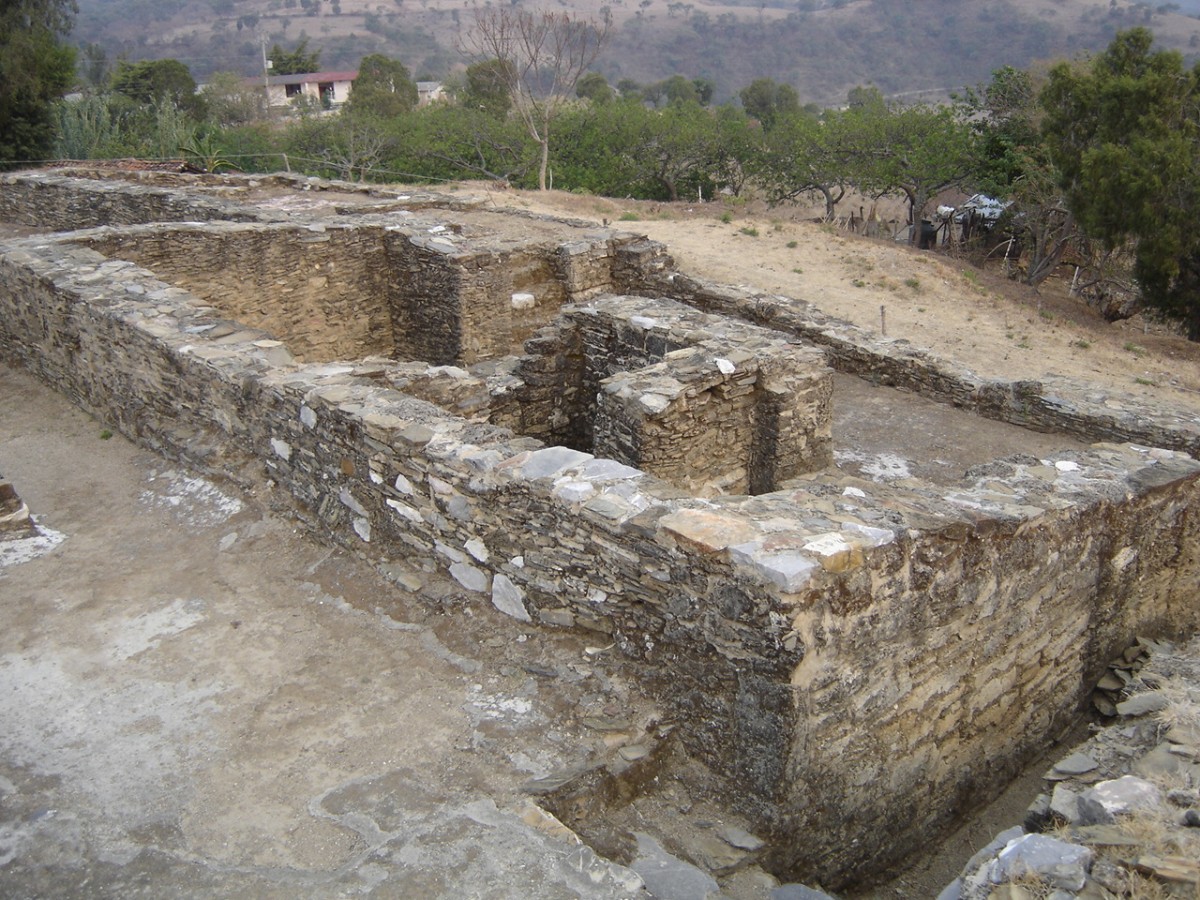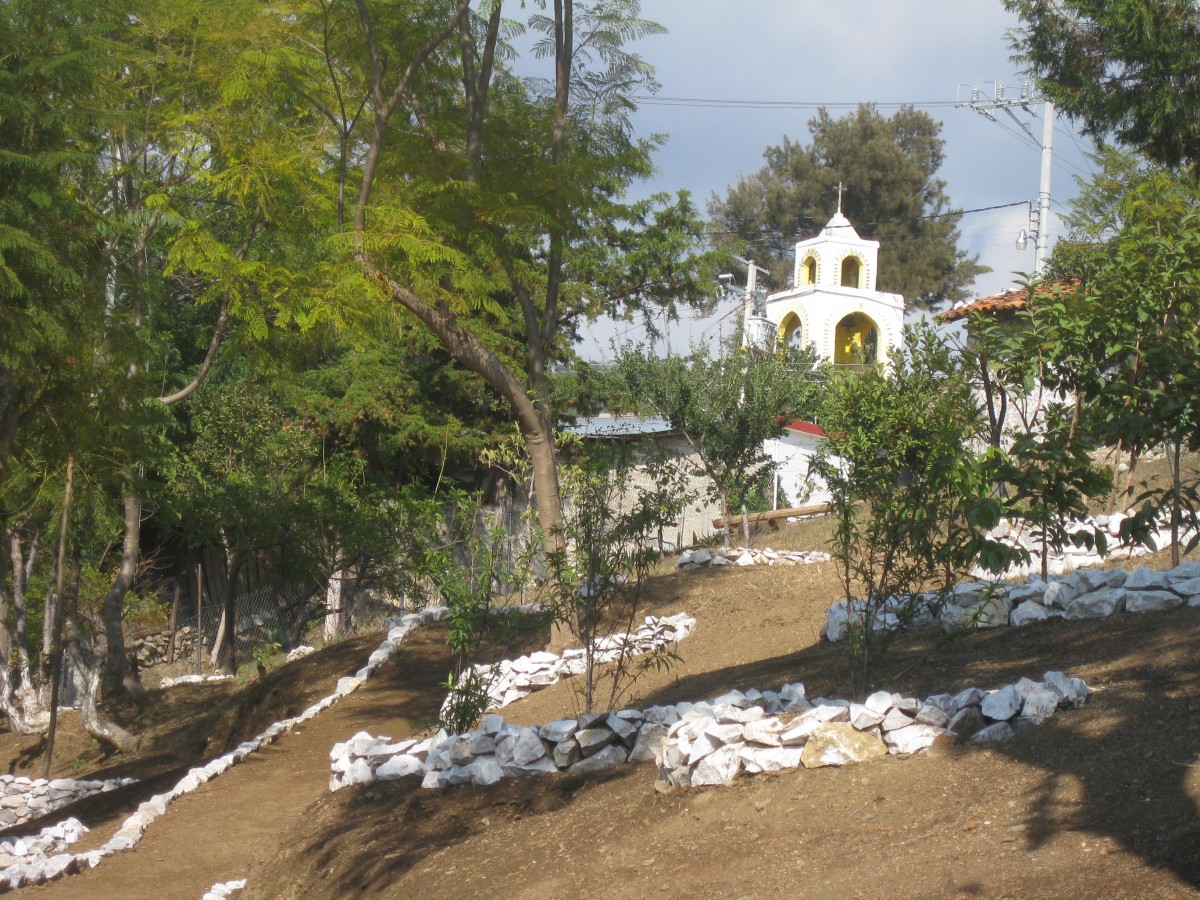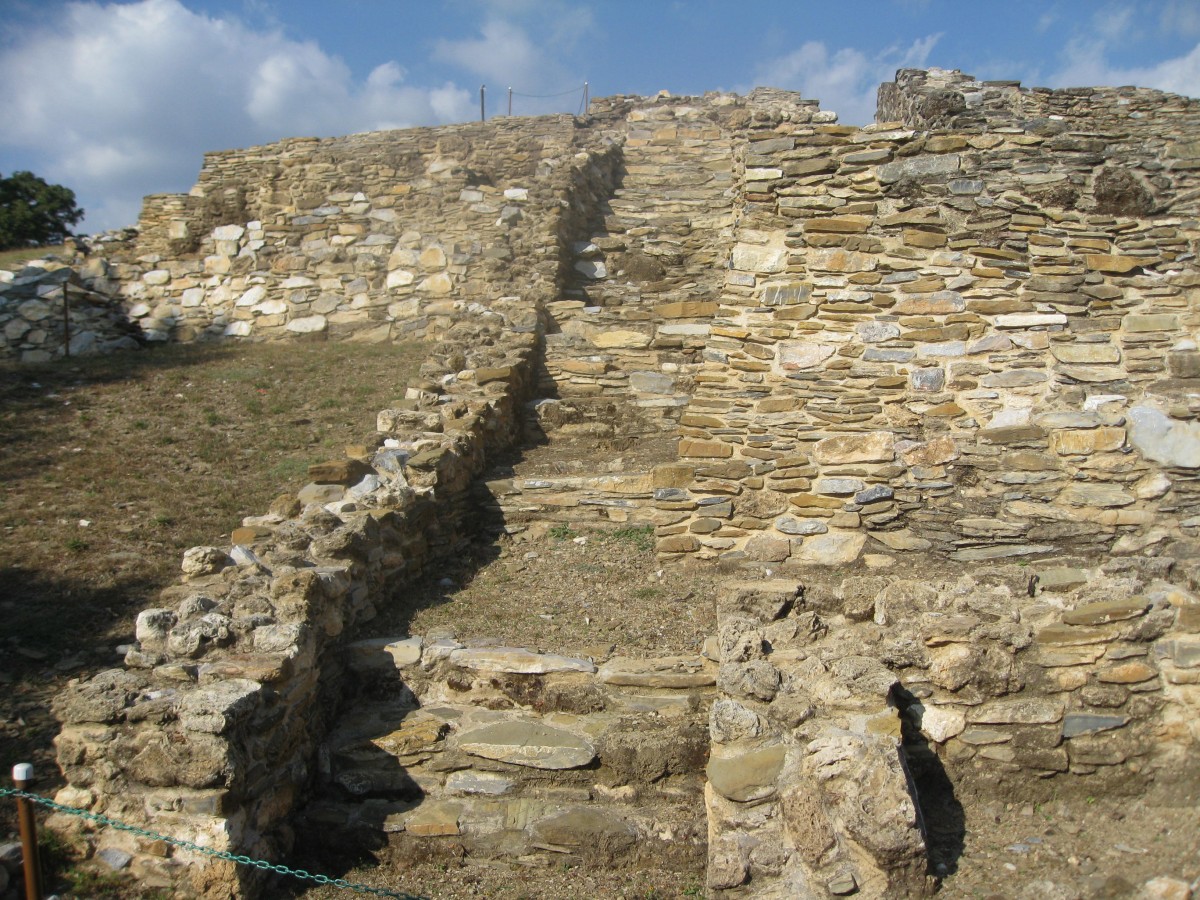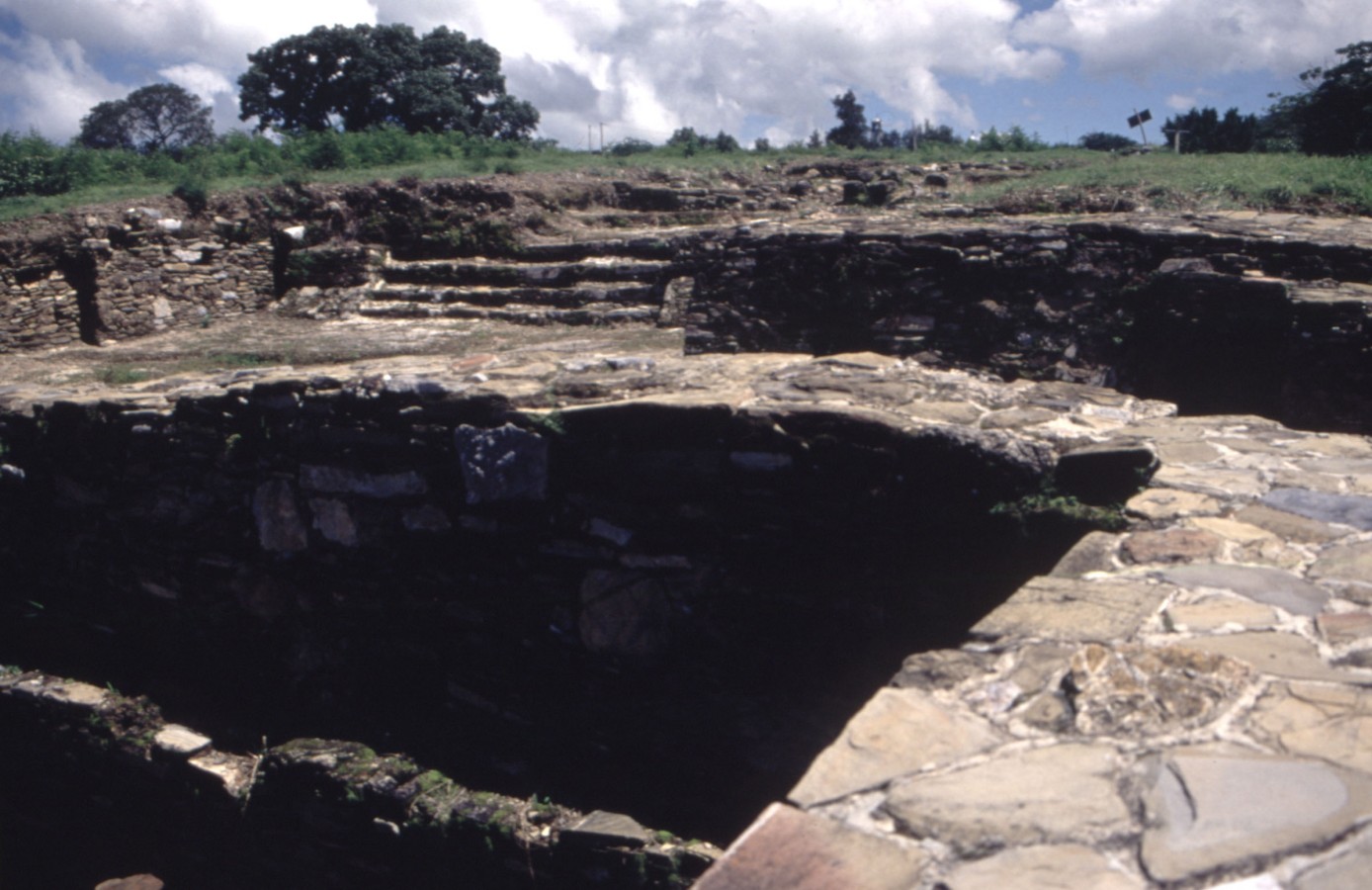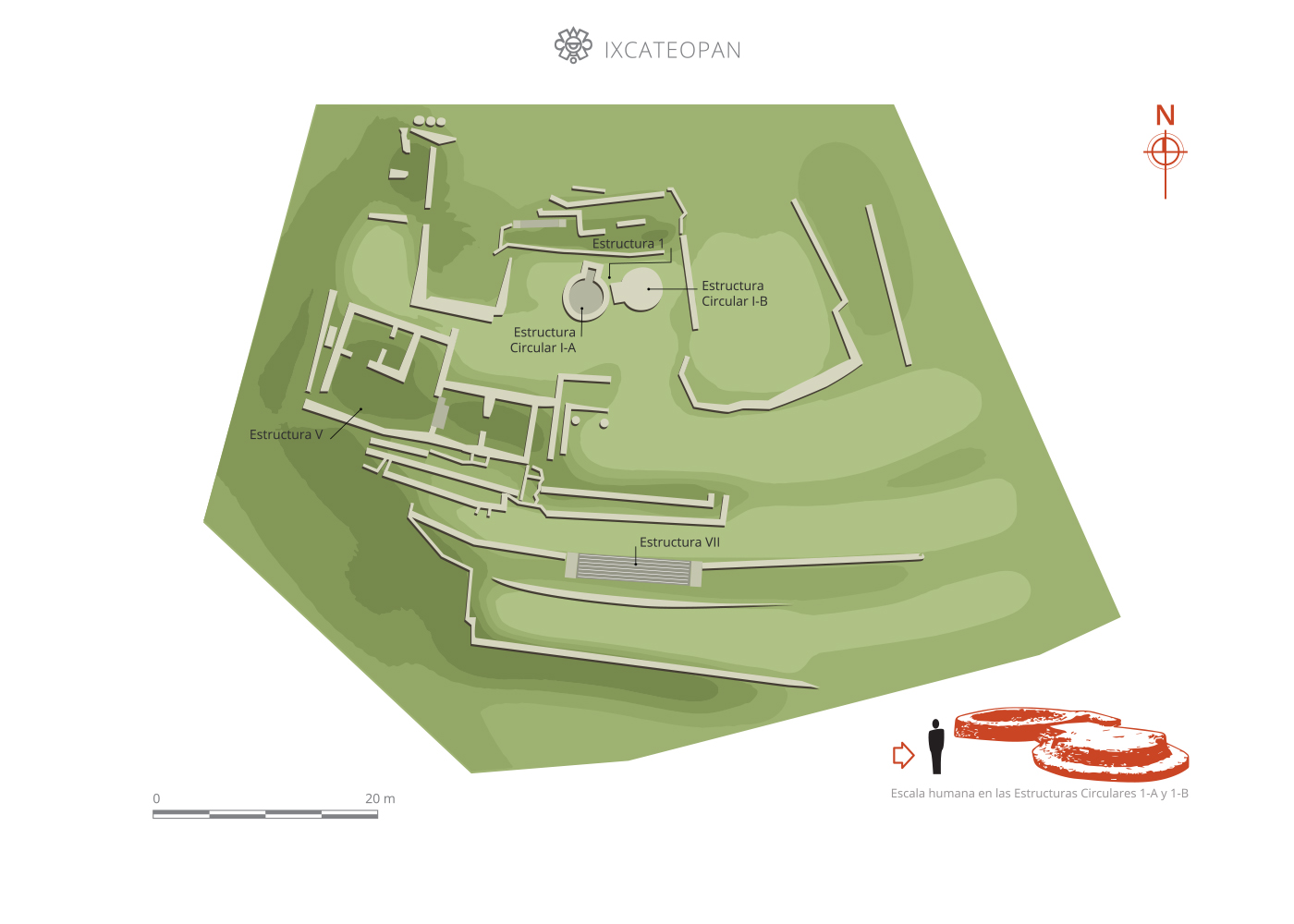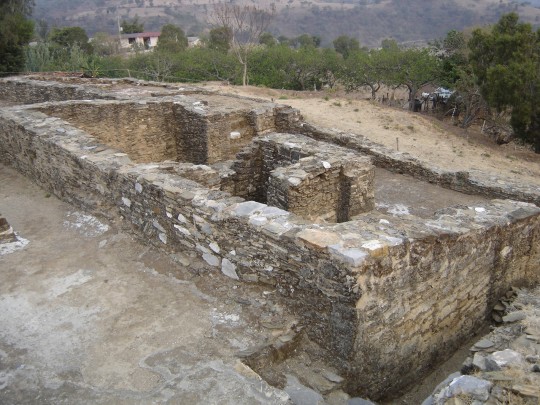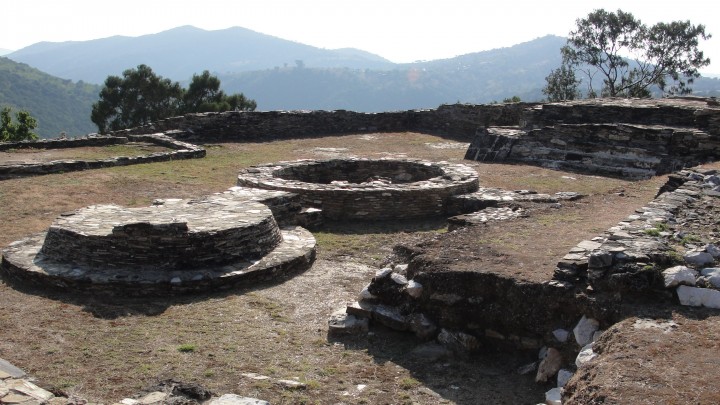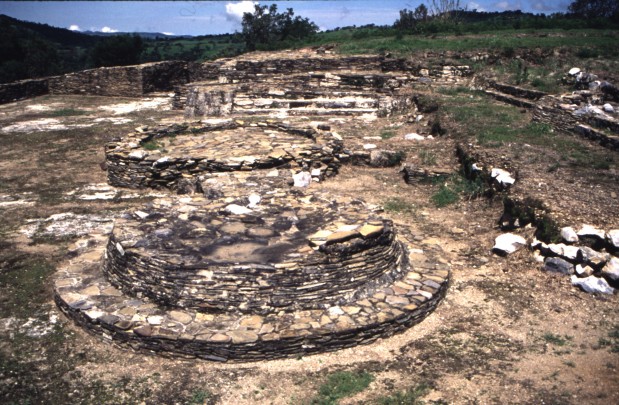Ixcateopan
Temple of cotton
The Mexica conquered this town and turned it into an important trading and ceremonial center. This was the site where they accumulated and redistributed the tributes they received from the region. There are temples, rooms and open spaces with the remains of red stucco on the floor.
About the site
This was an important economic and ceremonial center in the Mexica system of tributes. This is where the tribute was stored, in addition to being a center for making and redistributing cotton products. The modern town covers the majority of the archeological remains. The investigative work on the architectural spaces has led to the conclusion that there were five different phases of construction within the penultimate stage of occupation in the Late Postclassic from 1350 to 1450. The Chontal who settled in towns such as Oztuma, Ixcateopan, Taxco, Tlaxmalac, Chilacachapa and Coatepec Costales were allies with the Matlatzinca in the war against the Mexica during the reign of Moctezuma Ilhuicamina. It is known that the principal activity was trading, in addition to administrative and religious functions. The most important products were: cotton, textiles, salt, corn, pumpkins, chili, cacao, honey, wax, exotic feathers and hides. The ceramics consisted of tripod earthenware pots and pots in the form of stylized snakes.
Map
Did you know...
- The archeological site covers an acre and consists of a series of constructions situated on a natural elevation.
- Local materials such as limestone and marble slabs and boulders were used in the construction of the plinths.
- Stucco and red paint were used for the finishes.
- A human footprint was found in the floor stucco in Room 6.
Practical information
Tuesday to Saturday from 09:00 to 16:00 hrs. Last entry 15:00 hrs.
Free entry
Se localiza a 30 km de la ciudad de Taxco.
Following Federal Highway 51 towards Teloloapan, turn off in the town of San Martín Pachivia.
Services
-
+52 (747) 471 7121
-
This email address is being protected from spambots. You need JavaScript enabled to view it.
Directory
Jefe del Departamento de Protección y Resguardo de Bienes Culturales
Héctor Torres Calderón
This email address is being protected from spambots. You need JavaScript enabled to view it.
+52 (747) 472 2604


